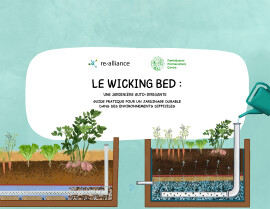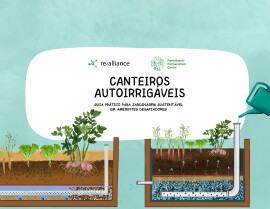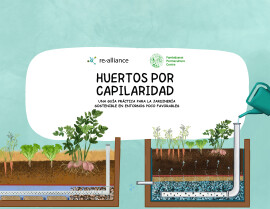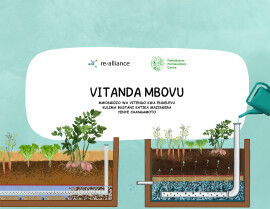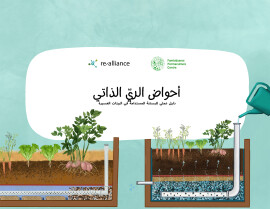
Seeds of Choice
Making the most of new varieties for small farmers
John Witcombe, John Farrington, Daljit Virk
Seeds of Choice provides an in-depth analysis of the regulatory frameworks that cover varietal testing, release and dissemination of seeds. This book analyses the varietal testing system used by the All India Co-ordinated Crop Improvement Projects. The study reveals that reforms are needed if a greater choice of varieties are to be provided to meet the diverse needs of farmers in widely differing agro-ecological situations. The evidence presented in this book shows that attempts to increase the involvement of farmers in crop improvement would be the most promising reform to the system. The challenge is to incorporate farmer participation as an integral part of the varietal testing system. Seeds of Choice is addressed to all those concerned with crop improvement, such as plant breeders and agricultural extensionists, agricultural development workers, including researchers, policymakers, donors, voluntary agencies and commercial seed producers.
Published: 1998
Pages: 296
eBook: 9781780445854
Paperback: 9781853394478
| Foreword v | |||
|---|---|---|---|
| Preface vii | |||
| Acknowledgements ix | |||
| List of Abbreviations xi | |||
| Regulatory Frameworks: Why do We Need Them? xvii | |||
| J. Farrington and J.R. Witcombe | |||
| Part 1: An Analysis of Varietal Testing | |||
| 1. Introduction 3 | |||
| D.S. Virk and J.R. Witcombe | |||
| 2. Trial Testing Sites in the All India Coordinated Projects— 7 | |||
| How well do they Represent Agro-ecological Zones and Farmers' Fields? | |||
| A.J. Packwood, D.S. Virk and J.R. Witcombe | |||
| 3. Resource Allocation and Efficiency of the Varietal Testing System 27 | |||
| J.R. Witcombe, D.S. Virk and A.G.B. Raj | |||
| Part 2: Varietal Release and Popularization | |||
| 4. Introduction 47 | |||
| P.S. Sodhi, D.S. Virk and J.R. Witcombe | |||
| 5. The Extent and Rate of Adoption of Modern Cultivars in India 53 | |||
| J.R. Witcombe, A.J. Packwood, A.G.B. Raj and D.S. Virk | |||
| 6. The Regulatory Framework for Varietal Testing and Release in India 69 | |||
| D.S. Virk | |||
| 1. Release and Popularization of Cultivars in Rajasthan 85 | |||
| K.L. Vyas | |||
| 8. Release and Popularization of Cultivars in Madhya Pradesh 105 | |||
| Y.M. Upadhyaya | |||
| 9. Release and Popularization of Cultivars in Gujarat 119 | |||
| E.G. Jaisani | |||
| 10. Introduction 135 | |||
| J.R. Witcombe | |||
| 11. Participatory Approaches in Pearl Millet Breeding 143 | |||
| E. Weltzien R., M.L. Whitaker, H.F.W. Rattunde, | |||
| M. Dhamotharan and MM. Anders | |||
| 12. Fanner Participatory Approaches for Varietal Improvement 171 | |||
| A. Joshi and J.R. Witcombe | |||
| 13. Participatory Breeding in Rice 191 | |||
| R. Thakur | |||
| Part 4: Scaling up | |||
| 14. Introduction 201 | |||
| P.S. Sodhi, A. Joshi and J.R. Witcombe | |||
| 15. The Role of NGOs in the Popularization of Varieties: | |||
| A Case-study from Western India 205 | |||
| M. Garg, P.S. Sodhi and A. Joshi | |||
| Part 5: Bibliography and Annexes | |||
| Bibliography 215 | |||
| Annexes 1 to 4 221 | |||
| List of Contributors 255 | |||
| Subject Index 257 | |||
| Author Index - 269 |
John Witcombe
Professor John Witcombe is Director of CAZS-NR at Bangor University. His research interests include Farmer participation in development of agricultural technologies, Participatory plant breeding and participatory varietal selection, Plant breeding, Marker-assisted selection, Agricultural biodiversity
John Farrington
John Farrington is with the Overseas Development Institute.
Evaluating the potential for farmer and plant breeder collaboration: A case study of farmer maize selection in Oaxaca, Mexico
Soleri, Daniela
Smith, Steven E.
Cleveland, David A.
Euphytica, Vol. 116 (2000), Iss. 1 P.41
https://doi.org/10.1023/A:1004093916939 [Citations: 30]How process-based modeling can help plant breeding deal with G x E x M interactions
Hajjarpoor, Amir
Nelson, William C.D.
Vadez, Vincent
Field Crops Research, Vol. 283 (2022), Iss. P.108554
https://doi.org/10.1016/j.fcr.2022.108554 [Citations: 24]Information and agricultural input markets: pearl millet seed in Rajasthan
Tripp, Robert
Pal, Suresh
Journal of International Development, Vol. 12 (2000), Iss. 1 P.133
https://doi.org/10.1002/(SICI)1099-1328(200001)12:1<133::AID-JID625>3.0.CO;2-J [Citations: 11]Geographies of Seed Networks for Food Plants (Potato, Ulluco) and Approaches to Agrobiodiversity Conservation in the Andean Countries
ZIMMERER, KARL S.
Society & Natural Resources, Vol. 16 (2003), Iss. 7 P.583
https://doi.org/10.1080/08941920309185 [Citations: 67]Biological Diversity in Agriculture and Global Change
Zimmerer, Karl S.
Annual Review of Environment and Resources, Vol. 35 (2010), Iss. 1 P.137
https://doi.org/10.1146/annurev-environ-040309-113840 [Citations: 93]Plant Breeding
Collection, Conservation and Utilization of Plant Genetic Resources
Gautam, P. L.
Singh, B. B.
Saxena, Sanjeev
Sharma, Rajiv K.
2004
https://doi.org/10.1007/978-94-007-1040-5_28 [Citations: 4]Rapid estimation of broad sense heritability of farmer-managed maize populations in the Central Valleys of Oaxaca, Mexico, and implications for improvement
Soleri, D.
Smith, S.E.
Euphytica, Vol. 128 (2002), Iss. 1 P.105
https://doi.org/10.1023/A:1020647813017 [Citations: 5]Increasing genetic diversity by participatory varietal selection in high potential production systems in Nepal and India
Witcombe, J.R.
Joshi, K.D.
Rana, R.B.
Virk, D.S.
Euphytica, Vol. 122 (2001), Iss. 3 P.575
https://doi.org/10.1023/A:1017599307498 [Citations: 36]In-silico optimization of peanut production in India through envirotyping and ideotyping
Hajjarpoor, Amir
Pavlík, Jan
Hora, Jan
Konopásek, Jakub
Pusupuleti, Janila
Vadez, Vincent
Soltani, Afshin
Feike, Til
Stočes, Michal
Jarolímek, Jan
Kholová, Jana
Computers and Electronics in Agriculture, Vol. 235 (2025), Iss. P.110383
https://doi.org/10.1016/j.compag.2025.110383 [Citations: 0]A biological framework for understanding farmers’ plant breeding
Cleveland, David A.
Daniela, Soleri
Smith, Steven E.
Economic Botany, Vol. 54 (2000), Iss. 3 P.377
https://doi.org/10.1007/BF02864788 [Citations: 42]Sweet Potato Virus Disease in Sub‐Saharan Africa: Evidence that Neglect of Seedlings in the Traditional Farming System Hinders the Development of Superior Resistant Landraces
Gibson, R. W.
Jeremiah, S. C.
Aritua, V.
Msabaha, R. P.
Mpembe, I.
Ndunguru, J.
Journal of Phytopathology, Vol. 148 (2000), Iss. 7-8 P.441
https://doi.org/10.1046/j.1439-0434.2000.00529.x [Citations: 28]
